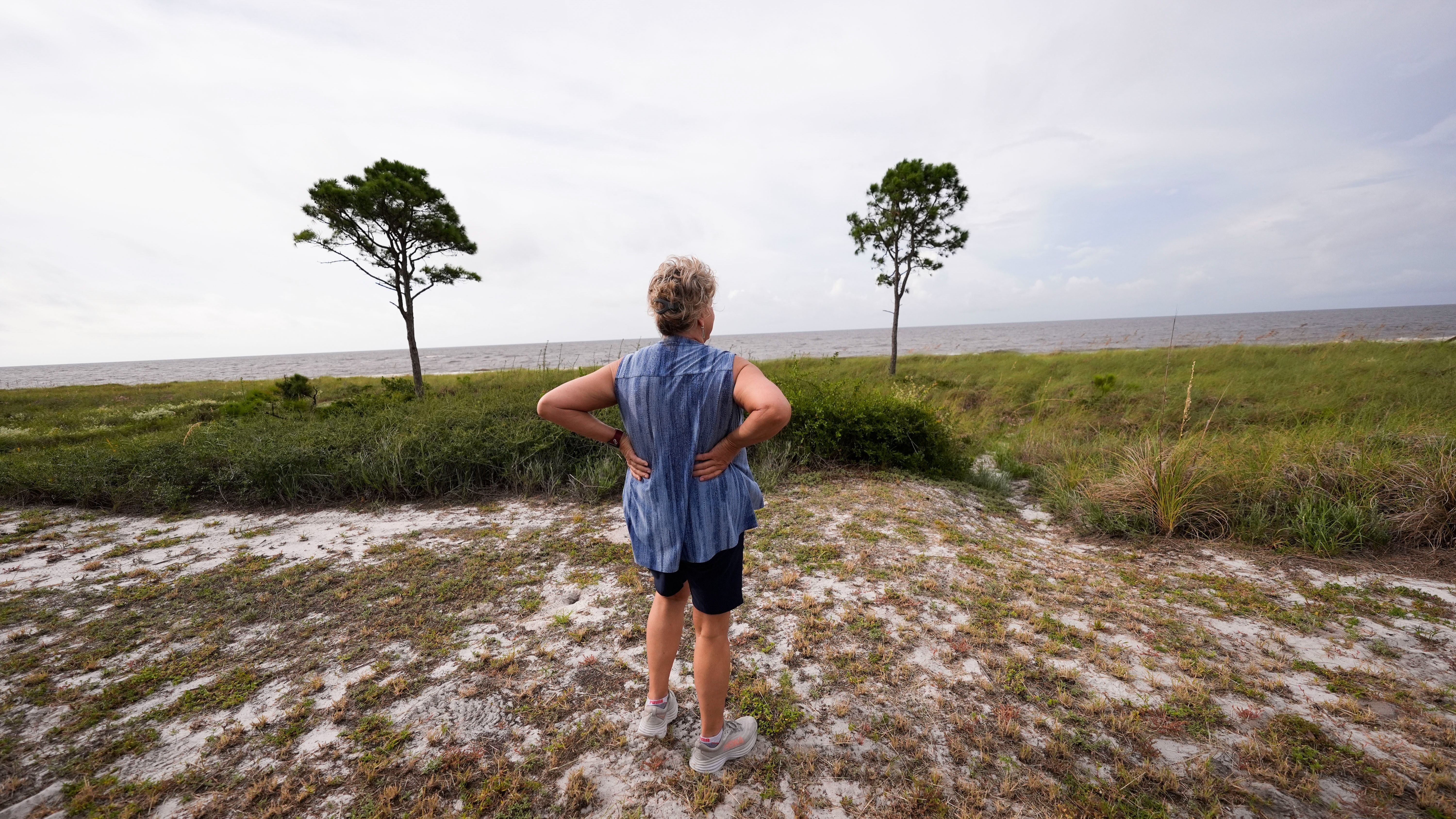Fast-moving Hurricane Helene was advancing Thursday across the Gulf of Mexico toward Florida, threatening a “catastrophic” storm surge in northwestern parts of the state as well as damaging winds, rains and flash floods hundreds of miles inland across much of the southeastern U.S., forecasters said. Helene was upgraded Thursday morning to a Category 2 storm and is expected to be a major hurricane — meaning a Category 3 or higher — when it makes landfall on Florida’s northwestern coast Thursday evening. Hurricane warnings and flash flood warnings extended far beyond the coast up into south-central Georgia. The governors of Florida, Georgia, the Carolinas and Virginia have all declared emergencies in their states.
Rain was beginning to blow in the predawn darkness Thursday along coastal U.S. Highway 98, which winds through countless fishing villages and vacation hideaways along Florida’s Big Bend. Shuttered gas stations dotted the two-lane highway, their windows boarded up with plywood to protect from the storm. The storm was expected to make landfall in the Big Bend region, where Florida’s panhandle and peninsula meet, according to Jack Beven, senior hurricane specialist at the National Hurricane Center in Miami. “Regardless of how strong it is, it is a very large storm,” Beven said. “It’s going to have impacts that cover a large area.”
How Do Hurricanes Get Their Names?
Hurricanes are named through a formal process established by the World Meteorological Organization (WMO) to make communication more efficient and reduce confusion, especially when multiple storms occur at the same time.
Here’s how the naming process works:
Pre-determined Lists
The WMO maintains six rotating lists of names for tropical storms and hurricanes in different ocean basins (e.g., Atlantic, Pacific). These lists are reused every six years.Names alternate between male and female names and are arranged alphabetically.
Regional Differences
Naming conventions differ by region. For instance, the Atlantic and Eastern North Pacific basins use different lists from the Western North Pacific or Indian Ocean regions.
Retirement of Names
If a hurricane is particularly devastating, the name is retired from the list and replaced with a new one. For example, “Katrina” (from the 2005 hurricane) was retired due to the storm’s catastrophic impact.
Name Assigning
Tropical storms are named when they reach sustained winds of 39 mph (63 km/h). If a tropical storm intensifies into a hurricane (winds of 74 mph or 119 km/h), it retains the same name.Names are used to improve clarity in public messaging, making it easier for the media, governments, and the public to track and respond to storms.
Mandatory Evacuations Ordered Along Florida’s Gulf Coast
Mandatory evacuation orders have been issued for low-lying areas stretching from Florida’s panhandle south to Tampa and Sarasota, including major cities like Tallahassee and Gainesville. Officials urge residents to heed these warnings as Hurricane Helene approaches, bringing dangerous storm surges and winds.
Catastrophic Storm Surges Expected in Apalachee Bay
The National Weather Service in Tallahassee forecasts storm surges up to 20 feet in Apalachee Bay, warning that the impact could be “catastrophic and unsurvivable.” Residents are advised to take evacuation orders seriously as Helene threatens the region with life-threatening conditions.
Florida’s Forgotten Coast Faces Severe Threat
The sparsely developed Forgotten Coast, known for its natural beauty and wildlife, is under significant threat. Residents like Anthony Godwin, who experienced Hurricane Michael in 2018, are bracing for worse conditions this time, with hopes for the best but expectations grounded in reality.
Schools and Universities Close Across Gulf Coast
Several school districts and universities across Florida’s Gulf Coast have cancelled classes in anticipation of Helene’s arrival. Communities are preparing for what could be one of the largest and most powerful storms in years to hit the region.
Helene on Track to Become a Major Hurricane
As of Thursday morning, Helene was moving north-northeast toward Florida with sustained winds of 100 mph. It is expected to intensify into a Category 3 hurricane, with winds over 110 mph, and continue to pose risks inland as it travels northward across the southeastern U.S.
Widespread Impact Expected in Southern U.S.
The effects of Hurricane Helene will likely stretch far beyond Florida, with strong winds and heavy rains reaching inland areas like Georgia, North Carolina, and the Appalachian Mountains. Power outages, flooding, and landslides are anticipated across multiple states.
Helene’s Path of Destruction Began in Mexico and the Caribbean
Helene has already caused significant damage in parts of Mexico and the Caribbean, flooding streets in Cancun and slamming Cuba’s Cortes Bay with 16-foot waves. As the storm moves north, the U.S. braces for the full impact of one of the season’s largest hurricanes.
Federal Preparations Underway as Helene Approaches
Federal authorities have positioned emergency supplies and search-and-rescue teams in key locations to assist with the aftermath of Helene’s landfall. With its size and strength, Helene is expected to leave widespread damage and disruption in its wake.
How Do Hurricanes And Storms Get Their Names? world-news World News | Latest International News | Global World News | World News Today




